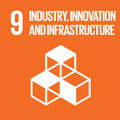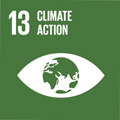- Docente: Ezio Mesini
- Credits: 6
- SSD: ING-IND/30
- Language: Italian
- Teaching Mode: In-person learning (entirely or partially)
- Campus: Bologna
- Corso: Second cycle degree programme (LM) in Environmental Engineering (cod. 8894)
-
from Feb 20, 2025 to Jun 13, 2025
Learning outcomes
At the end of the course the student will acquire the necessary knowledge for the study of underground fluids reservoirs (and related resources) and for planning of their development for civil and industrial purposes. The student will deepen the knowledge of the petrophysical, dynamic and geomechanical characteristics of reservoirs and the thermodynamics of the saturating fluids. More specifically, the student will be able to: • classify the reservoirs from a thermodynamic point of view and analyse the reservoir drive mechanisms, for the purpose of optimizing production; • assess the reserves of underground fluids; • evaluate the critical parameters supporting the choices of numerical simulation techniques of the behaviour of reservoirs in time and space; • develop her/his own critical sense for analysing and assessing the environmental sustainability of underground fluids production.
Course contents
Hydrocarbon reservoirs: conditions for the existence of an oil or gas reservoirs, sedimentology, generation of hydrocarbons and their migrations, hydrocarbon traps, temperature and pressure in the reservoir.
Reservoir fluids: composition, phase behavior of hydrocarbons systems under reservoir conditions, thermodynamic properties of reservoir fluids, volumetric behavior of gases and condensates, volumetric behavior and viscosity of oil, the oil and gas formation volume factor, the compressibility of oil and gas, property of reservoir water.
Thermodinamical classification of hydrocarbon reservoirs.
Reservoir rocks: core logs, porosity, compressibility, wettability, basic concepts of capillary, drainage and imbibition, capillary pressure curves, porosity, absolute permeability, effective-relative permeability curves (gas-oil, and oil-water).
Driving forces or mechanisms in producing hydrocarbons from underground.
Evaluation of oil and gas reserves: definitions, classification of reserves according to production status, basic data for the volumetric calculations of reserves, reservoir area, net pay thickness, porosity, water saturation, oil and gas volume factor, recovery factor.
The influx of water into the reservoir by the following methods: Schilthuis, van Everdingen and Hurst.
Dynamic method: material balance equation and prediction of the gas production as function of time for dry gas reservoirs in contact with an aquifer and for condensate reservoirs.
Material balance equation for oil reservoirs, material balance for undersaturated oil and saturated oil reservoirs with and without gas cap.
Radial flow through porous media for slightly compressible fluids: equation of single flow radial flow, linearization of the diffusivity equation, horizontal radial flow.
Immiscible displacement in homogeneous porous media: the fractional flow equation, the Buckley-Leverett displacement equation. Factor influencing oil recovery by water injection. Water and gas coning, calculation of the critical flow rate for water and gas coning. Critical elements to evaluate the environmental sustainability of underground fluids production.
Scenarios and economical analyses in developing onshore and offshore reservoirs. An outline on basic economics of hydrocarbon industry, on public policies and on geopolitics and security: the Italian, European and global points of view.
Readings/Bibliography
- K. Bjørlykke: Petroleum Geoscience - From sedimentary Environments to rock physics. Springer Verlag Berlin Heidelberg, second ed. 2015.
- A.Y. DANDEKAR. Petroleum Reservoir - Rock and Fluid Properties. CRC Press, 2013.
- G. L. CHIERICI. Principles of Petroleum Reservoir Engineering, volls 1 and 2. Springer-Verlag, Berlin, New York, 1995.
- M. BECCARI, U. ROMANO (Editors) - Encyclopedia of Hydrocarbons. Vol. I - Exploration, production and transport, ROMA: Istituto della Enciclopedia Italiana TRECCANI (ITALY), 2005.
- M. BECCARI, U. ROMANO (Editors) - Encyclopedia of Hydrocarbons. Vol. IV - Economics, Politics, Legislation, ROMA: Istituto della Enciclopedia Italiana TRECCANI (ITALY), 2007.
Teaching methods
Classroom lectures, seminars.
Assessment methods
The exam consists in an written test and/or oral interview in order to assess the methodological and critical skills acquired by the student. The student will be invited to discuss the topics covered during the lessons.
The achievement of an organic vision of the issues addressed during the classes and their critical use, which demonstrate ownership of a mastery of expression and specific language, will be assessed with marks of excellence. Mechanical and / or mnemonic knowledge of matter, synthesis and analysis of non-articulating and/or correct language but not always appropriate will lead to discrete assessments; training gaps and/or inappropriate language - although in a context of minimal knowledge of the material - will lead to votes that will not exceed the sufficiency. Training gaps, inappropriate language, lack of guidance within the reference materials offered during the course will lead to failed assessments.
Teaching tools
Video projector, PC, overhead projector, traditional blackboard, pen tablet.
Office hours
See the website of Ezio Mesini
SDGs



This teaching activity contributes to the achievement of the Sustainable Development Goals of the UN 2030 Agenda.
